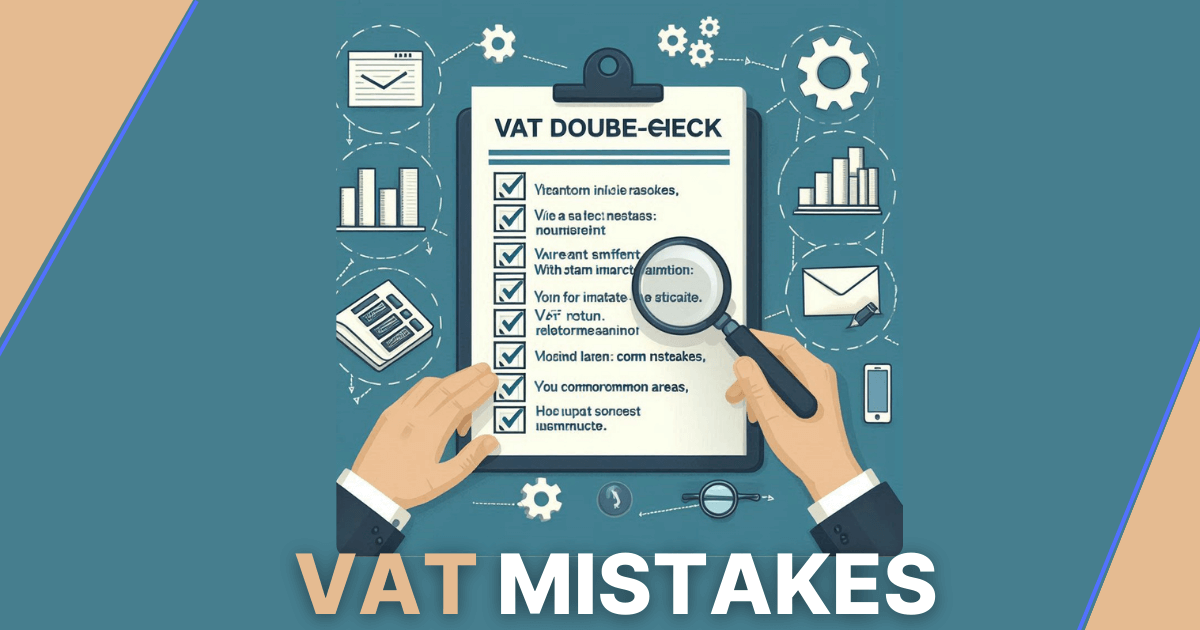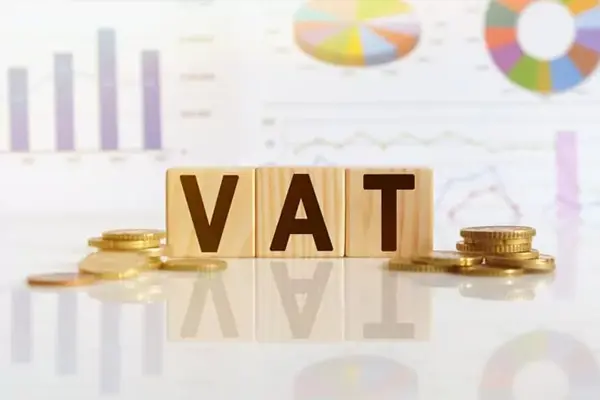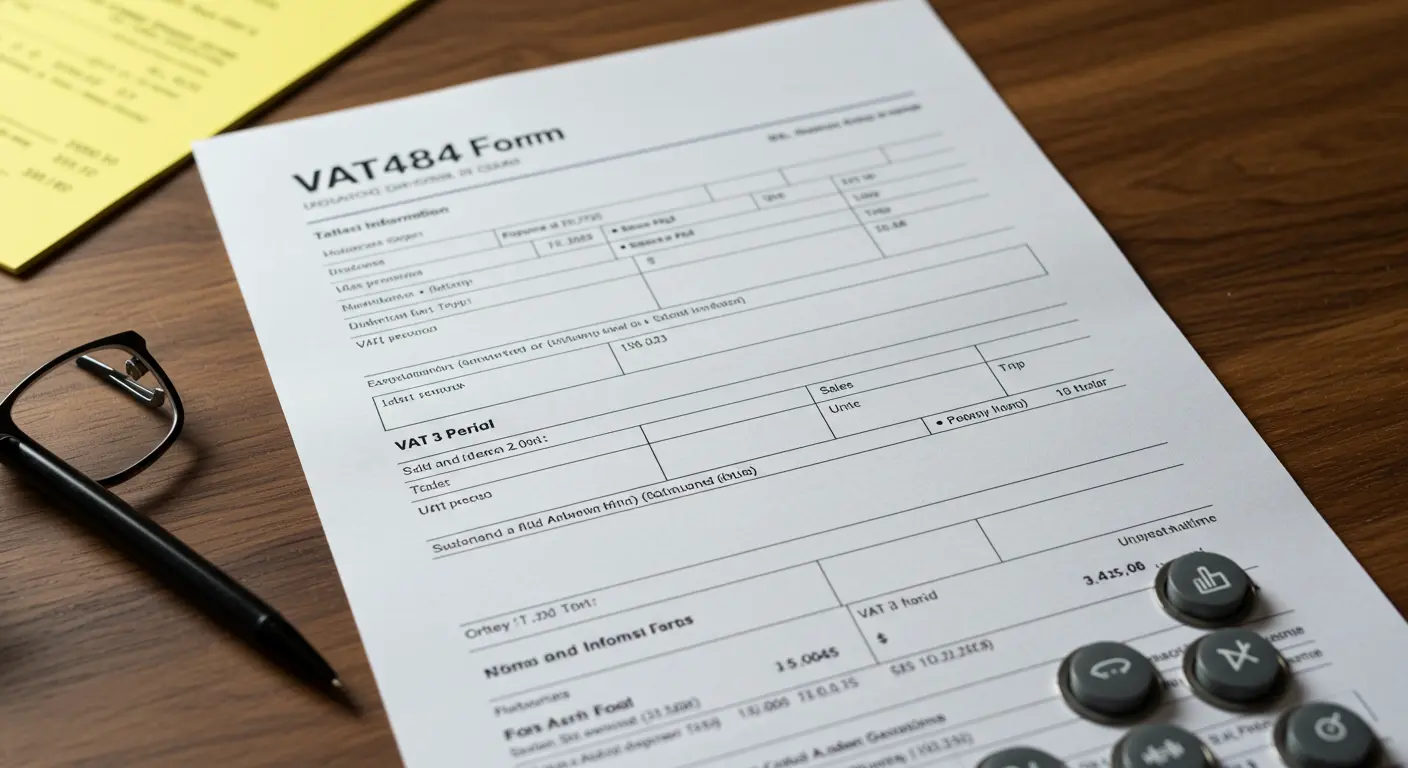Common VAT Mistakes
Common VAT mistakes are important considerations for any business. Mistakes in VAT returns can result in penalties, interest charges, and even HMRC investigations. Below are some of the most common VAT filing mistakes and tips on how to prevent them:
- Reclaiming VAT Without Invoices: One of the most frequent errors businesses make is attempting to reclaim VAT without proper invoices. HMRC requires valid VAT invoices to support any VAT reclaim. Without these documents, your claim could be disallowed. To avoid this, ensure you have all the necessary invoices before submitting your VAT return.
- VAT on Entertainment: Businesses often mistakenly reclaim VAT on entertainment expenses. However, VAT on entertainment provided to clients is usually not reclaimable unless it’s part of staff welfare. To avoid this mistake, carefully review HMRC’s rules on what qualifies as a reclaimable expense.
- Claiming VAT Twice: This error occurs when a business accidentally reclaims VAT on an expense more than once, often due to poor record-keeping. To prevent this, maintain detailed records and cross-check your claims before filing.
- VAT on Fuel: VAT on fuel can be tricky, especially if you use a vehicle for both business and personal purposes. Incorrectly calculating or claiming VAT on fuel is a common issue. Businesses should use the appropriate fuel scale charge or maintain accurate mileage records to claim the correct amount of VAT.
- VAT Calculation Mistakes: Incorrectly calculating the amount of VAT due is one of the most common VAT filing mistakes. This can happen due to manual errors or misunderstandings of VAT rules. To avoid this, double-check your calculations and consider using VAT accounting software to minimize errors.
- Import VAT: Import VAT must be accounted for correctly when bringing goods into the UK. Businesses often mistakenly underpay or overpay import VAT. Make sure you understand the current rules and have the correct documentation to support your import VAT calculations.
- Entering The Wrong Figures: Entering incorrect figures on your VAT return is a common error that can lead to HMRC penalties. Whether it’s transposing numbers or misunderstanding where to report certain figures, accuracy is crucial. Always review your return thoroughly before submission to catch any potential mistakes.
- Not Charging VAT on Non-standard Supplies: Some businesses fail to charge VAT on non-standard supplies, such as services provided to overseas customers. Understanding when and how to apply VAT to different types of supplies is key to avoiding this mistake. Be sure to familiarize yourself with the rules for VAT on non-standard supplies to ensure compliance.
Common VAT Definitions
Understanding common VAT definitions is crucial for correctly managing VAT. Terms like “input tax,” “output tax,” “exempt supplies,” and “zero-rated supplies” can significantly impact how you file your VAT return. Familiarizing yourself with these terms will help you avoid misunderstandings and errors in your VAT calculations.
Reclaiming VAT Without Invoices
As mentioned earlier, reclaiming VAT without invoices is a major mistake. Always ensure a valid VAT invoice for any expense you wish to reclaim. This invoice must include specific details such as the supplier’s VAT number, the amount of VAT charged, and a description of the goods or services provided. Without these details, HMRC may reject your claim.
VAT on Entertainment
VAT on entertainment expenses is another area where businesses frequently go wrong. Generally, VAT on client entertainment is not reclaimable, while VAT on staff entertainment might be, depending on the circumstances. Review HMRC’s guidelines on entertainment expenses to determine what you can and cannot reclaim.
Claiming VAT Twice
Double-claiming VAT is a mistake that can easily occur, especially if invoices are not tracked properly. Implementing a robust record-keeping system can help prevent this error. Regular audits of your VAT records can also help you catch any duplicate claims before they’re submitted.
VAT on Fuel
Handling VAT on fuel requires careful attention, especially if a vehicle is used for both business and personal purposes. Businesses must decide whether to reclaim VAT on all fuel costs and pay a fuel scale charge or to keep detailed mileage records and claim VAT only on business mileage. Understanding these options will help you make the correct VAT claims.
VAT Calculation Mistakes
VAT calculation mistakes are common and can lead to significant errors on your VAT return. Using accounting software can help reduce the risk of manual errors, but it’s still important to review your calculations carefully. Double-check the VAT rate applied to each transaction and ensure that any VAT-exempt or zero-rated sales are correctly accounted for.
Import VAT
Incorrectly accounting for import VAT can lead to overpaying or underpaying VAT. To avoid this, ensure that you understand the correct procedures for declaring import VAT, including when and how to use postponed VAT accounting if applicable. Keep all relevant documentation, such as customs declarations and freight invoices, organized and accessible.
Entering The Wrong Figures
Entering the wrong figures is one of the most common VAT filing mistakes. This can happen due to simple typos, misunderstanding VAT rules, or misinterpreting financial data. Always double-check your entries and consider using a review process to catch errors before filing your VAT return.
Not Charging VAT on Non-standard Supplies
Some businesses overlook the requirement to charge VAT on non-standard supplies, such as services to overseas customers. Not charging VAT on non-standard supplies can lead to underpayment of VAT and potential fines. It’s essential to understand the VAT rules for different types of transactions, including international sales, to ensure you charge the correct amount of VAT.
How to Check Your VAT Return is Correct
To avoid these common errors, it’s important to know how to check your VAT return is correct. This involves reviewing all calculations, verifying that you’ve included all necessary invoices, ensuring that VAT rates are correctly applied, and confirming that all figures are entered accurately. Using VAT software or seeking professional assistance can help reduce the likelihood of errors.
Correcting VAT Errors
If you discover VAT errors after submitting your return, it’s crucial to address them promptly. HMRC allows businesses to correct minor errors on their next VAT return if they fall below a certain threshold (currently £10,000 or 1% of turnover, whichever is greater, but not exceeding £50,000). Larger errors may require a voluntary disclosure to HMRC. Understanding how to correct VAT errors is essential to avoid further complications or penalties.
Conclusion
Avoiding VAT mistakes is essential for any business to remain compliant and avoid costly penalties. By understanding the most common VAT filing mistakes and taking proactive steps to prevent them, you can ensure that your VAT returns are accurate and timely. If you’re struggling with VAT or concerned about making errors, seeking professional advice can be invaluable. Accurate VAT filing is not just about compliance; it’s about protecting your business’s financial health.
















